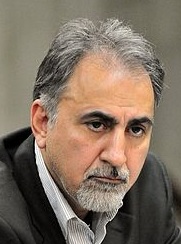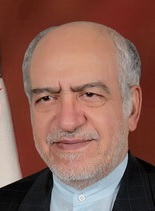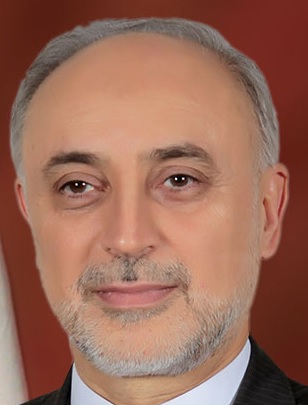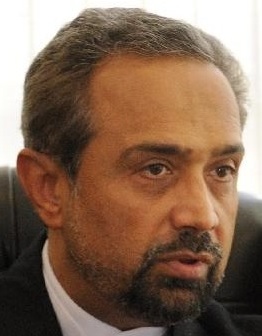Iran’s presidential cabinet has more members with PhDs from American universities than the U.S. cabinet itself, according to The Economist. President Hassan Rouhani’s cabinet starkly contrasts with that of his predecessor, Mahmoud Ahmadinejad, who preferred advisers with Iranian academic backgrounds. In the years following the 1979 revolution, Iran’s new political elite viewed Western educations with suspicion. But as of late 2013, Rouhani’s cabinet had more American PhD holders than the cabinets of France, Germany, Italy, Japan, Russia, and Spain combined, according to The Atlantic. President Hassan Rouhani himself earned his master’s and doctoral degrees from Glasgow Caledonian University in Scotland.
Iran currently has the highest number of US college alums serving in any foreign government cabinet in the world pic.twitter.com/WjQecvZOTk
— Reza Aslan (@rezaaslan) October 14, 2014The following are profiles of the six members of Rouhani’s cabinet who hold advanced degrees from American universities.
Minister of Foreign Affairs: Mohammad Javad Zarif
 Born in 1952, Najafi is a well-known reformist technocrat who has served in multiple Iranian administrations. He served as minister of education under President Hashemi Rafsanjani from 1989 to 1997, and as head of the Planning and Budget Organization under President Mohammad Khatami from 1997 to 2000.
Born in 1952, Najafi is a well-known reformist technocrat who has served in multiple Iranian administrations. He served as minister of education under President Hashemi Rafsanjani from 1989 to 1997, and as head of the Planning and Budget Organization under President Mohammad Khatami from 1997 to 2000. Born in 1952, Vaezi served in several high-ranking positions in the foreign ministry from 1986 to 1999, including deputy foreign minister for European and American affairs under President Rafsanjani and deputy foreign minister for economic affairs under President Khatami. During his time at the foreign ministry he played a role in mediating the Karabakh dispute between Armenia and Azerbaijan.
Born in 1952, Vaezi served in several high-ranking positions in the foreign ministry from 1986 to 1999, including deputy foreign minister for European and American affairs under President Rafsanjani and deputy foreign minister for economic affairs under President Khatami. During his time at the foreign ministry he played a role in mediating the Karabakh dispute between Armenia and Azerbaijan. Born in 1945, Nematzadeh is an experienced technocrat. He served as minister of labor under President Mohammad-Ali Raja’i. He was later appointed as minister of industry under President Akbar Hashemi Rafsanjani from 1989 to 1997, and then as deputy oil minister for petrochemical affairs under President Mohamed Khatami from 1997 to 2005. Nematzadeh managed Rouhani’s 2013 presidential campaign before his appointment as minister of industry.
Born in 1945, Nematzadeh is an experienced technocrat. He served as minister of labor under President Mohammad-Ali Raja’i. He was later appointed as minister of industry under President Akbar Hashemi Rafsanjani from 1989 to 1997, and then as deputy oil minister for petrochemical affairs under President Mohamed Khatami from 1997 to 2005. Nematzadeh managed Rouhani’s 2013 presidential campaign before his appointment as minister of industry. Born in 1949, Salehi was appointed as Iran’s envoy to the International Atomic Energy (IAEA) by President Khatami in 1997 and remained in that position until 2005. He signed an IAEA protocol in 2003 which allowed agency inspectors greater authority to verify the country’s nuclear program. Despite President Ahmadinejad’s criticism of the decision to sign this protocol, he appointed Salehi as foreign minister. Salehi served from January 2011 to August 2013. Under President Rouhani’s administration, he was appointed as head of the Atomic Energy Organization of Iran.
Born in 1949, Salehi was appointed as Iran’s envoy to the International Atomic Energy (IAEA) by President Khatami in 1997 and remained in that position until 2005. He signed an IAEA protocol in 2003 which allowed agency inspectors greater authority to verify the country’s nuclear program. Despite President Ahmadinejad’s criticism of the decision to sign this protocol, he appointed Salehi as foreign minister. Salehi served from January 2011 to August 2013. Under President Rouhani’s administration, he was appointed as head of the Atomic Energy Organization of Iran. Born in 1954, Nahavandian is an experienced technocrat. He received his PhD in economics from George Washington University and founded the Islamic Research and Information Center, which reportedly partnered with more than 40 Islamic centers across the United States on culture and education. He became the deputy minister of commerce in 1993 and resigned in 2002 to serve as President Khatami’s economic advisor. Nahavandian was elected Deputy President of the Iran Chamber of Commerce in 2007, a position he held until Rouhani appointed him as his chief of staff.
Born in 1954, Nahavandian is an experienced technocrat. He received his PhD in economics from George Washington University and founded the Islamic Research and Information Center, which reportedly partnered with more than 40 Islamic centers across the United States on culture and education. He became the deputy minister of commerce in 1993 and resigned in 2002 to serve as President Khatami’s economic advisor. Nahavandian was elected Deputy President of the Iran Chamber of Commerce in 2007, a position he held until Rouhani appointed him as his chief of staff.
